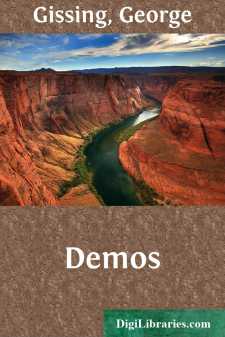Categories
- Antiques & Collectibles 13
- Architecture 36
- Art 48
- Bibles 22
- Biography & Autobiography 813
- Body, Mind & Spirit 142
- Business & Economics 28
- Children's Books 15
- Children's Fiction 12
- Computers 4
- Cooking 94
- Crafts & Hobbies 4
- Drama 346
- Education 46
- Family & Relationships 57
- Fiction 11829
- Games 19
- Gardening 17
- Health & Fitness 34
- History 1377
- House & Home 1
- Humor 147
- Juvenile Fiction 1873
- Juvenile Nonfiction 202
- Language Arts & Disciplines 88
- Law 16
- Literary Collections 686
- Literary Criticism 179
- Mathematics 13
- Medical 41
- Music 40
- Nature 179
- Non-Classifiable 1768
- Performing Arts 7
- Periodicals 1453
- Philosophy 64
- Photography 2
- Poetry 896
- Political Science 203
- Psychology 42
- Reference 154
- Religion 513
- Science 126
- Self-Help 84
- Social Science 81
- Sports & Recreation 34
- Study Aids 3
- Technology & Engineering 59
- Transportation 23
- Travel 463
- True Crime 29
The House of Cobwebs and Other Stories
by: George Gissing
Description:
Excerpt
THE WORK OF GEORGE GISSING
AN INTRODUCTORY SURVEY
'Les gens tout ÐÑ fait heureux, forts et bien portants, sont-ils préparés comme il faut pour comprendre, pénétrer, exprimer la vie, notre vie si tourmentée et si courte?'
MAUPASSANT.
In England during the sixties and seventies of last century the world of books was dominated by one Gargantuan type of fiction. The terms book and novel became almost synonymous in houses which were not Puritan, yet where books and reading, in the era of few and unfree libraries, were strictly circumscribed. George Gissing was no exception to this rule. The English novel was at the summit of its reputation during his boyish days. As a lad of eight or nine he remembered the parts of Our Mutual Friend coming to the house, and could recall the smile of welcome with which they were infallibly received. In the dining-room at home was a handsomely framed picture which he regarded with an almost idolatrous veneration. It was an engraved portrait of Charles Dickens. Some of the best work of George Eliot, Reade, and Trollope was yet to make its appearance; Meredith and Hardy were still the treasured possession of the few; the reigning models during the period of Gissing's adolescence were probably Dickens and Trollope, and the numerous satellites of these great stars, prominent among them Wilkie Collins, William Black, and Besant and Rice.
Of the cluster of novelists who emerged from this school of ideas, the two who will attract most attention in the future were clouded and obscured for the greater period of their working lives. Unobserved, they received, and made their own preparations for utilising, the legacy of the mid-Victorian novel—moral thesis, plot, underplot, set characters, descriptive machinery, landscape colouring, copious phraseology, Herculean proportions, and the rest of the cumbrous and grandiose paraphernalia of Chuzzlewit, Pendennis, and Middlemarch. But they received the legacy in a totally different spirit. Mark Rutherford, after a very brief experiment, put all these elaborate properties and conventions reverently aside. Cleverer and more docile, George Gissing for the most part accepted them; he put his slender frame into the ponderous collar of the author of the Mill on the Floss, and nearly collapsed in wind and limb in the heart-breaking attempt to adjust himself to such an heroic type of harness.
The distinctive qualities of Gissing at the time of his setting forth were a scholarly style, rather fastidious and academic in its restraint, and the personal discontent, slightly morbid, of a self-conscious student who finds himself in the position of a sensitive woman in a crowd. His attitude through life was that of a man who, having set out on his career with the understanding that a second-class ticket is to be provided, allows himself to be unceremoniously hustled into the rough and tumble of a noisy third. Circumstances made him revolt against an anonymous start in life for a refined and educated man under such conditions....












